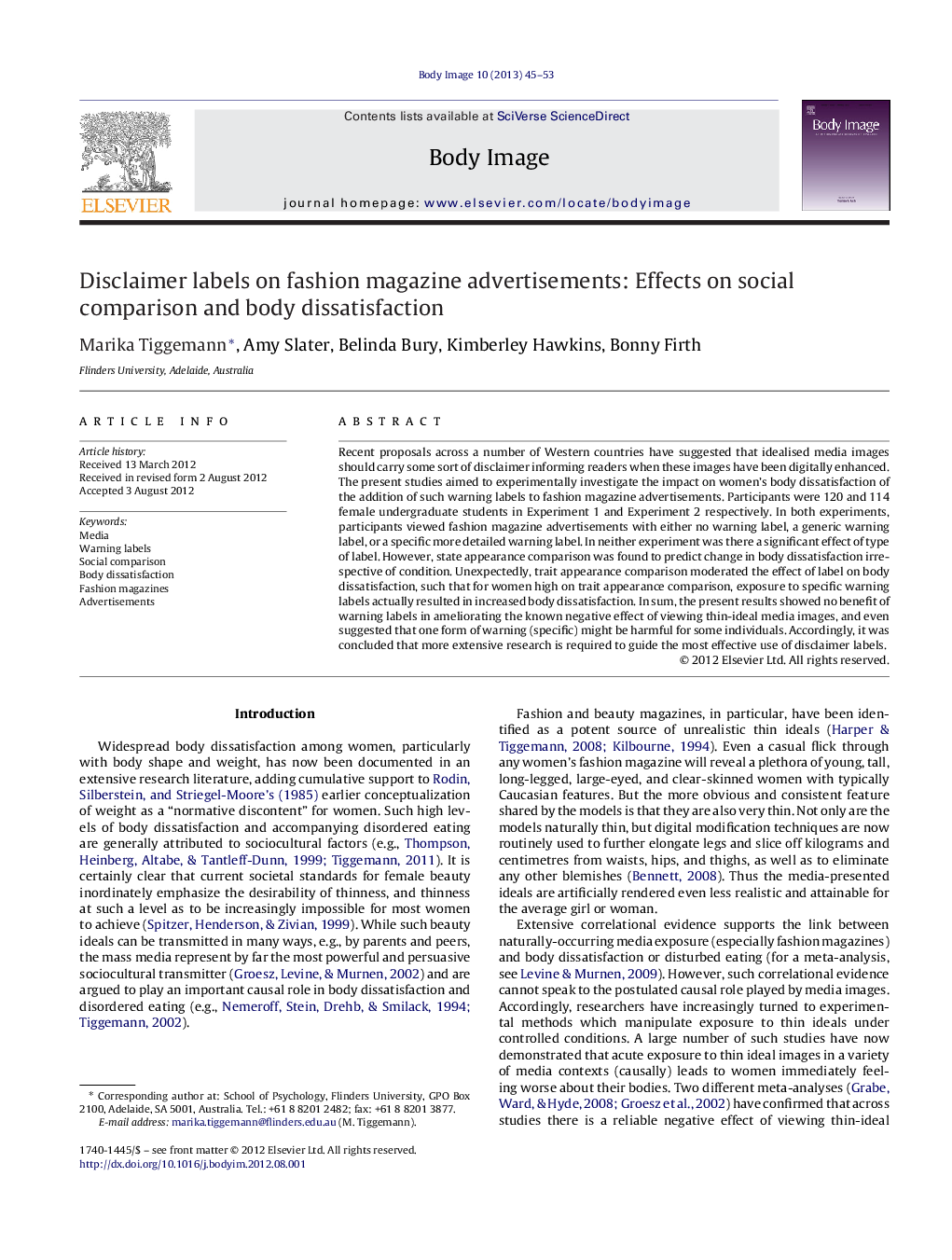| Article ID | Journal | Published Year | Pages | File Type |
|---|---|---|---|---|
| 903014 | Body Image | 2013 | 9 Pages |
Recent proposals across a number of Western countries have suggested that idealised media images should carry some sort of disclaimer informing readers when these images have been digitally enhanced. The present studies aimed to experimentally investigate the impact on women's body dissatisfaction of the addition of such warning labels to fashion magazine advertisements. Participants were 120 and 114 female undergraduate students in Experiment 1 and Experiment 2 respectively. In both experiments, participants viewed fashion magazine advertisements with either no warning label, a generic warning label, or a specific more detailed warning label. In neither experiment was there a significant effect of type of label. However, state appearance comparison was found to predict change in body dissatisfaction irrespective of condition. Unexpectedly, trait appearance comparison moderated the effect of label on body dissatisfaction, such that for women high on trait appearance comparison, exposure to specific warning labels actually resulted in increased body dissatisfaction. In sum, the present results showed no benefit of warning labels in ameliorating the known negative effect of viewing thin-ideal media images, and even suggested that one form of warning (specific) might be harmful for some individuals. Accordingly, it was concluded that more extensive research is required to guide the most effective use of disclaimer labels.
► Magazine advertisements featuring thin attractive female models lead to greater body dissatisfaction than advertisements featuring products only. ► Disclaimer warning labels on fashion magazine advertisements do not decrease social comparison and body dissatisfaction. ► Disclaimer warning labels with detailed wording lead to increased body dissatisfaction in women high on trait social comparison.
